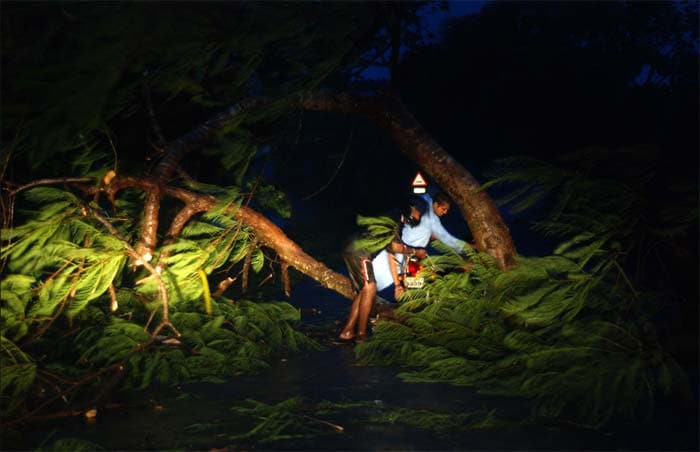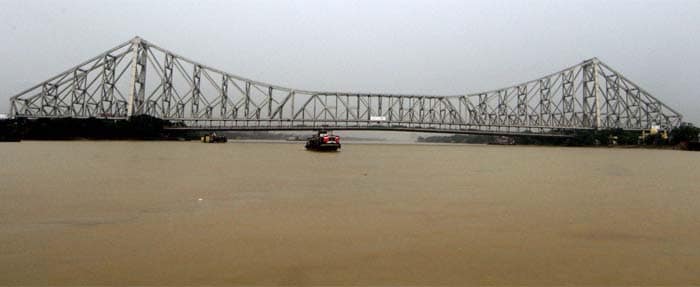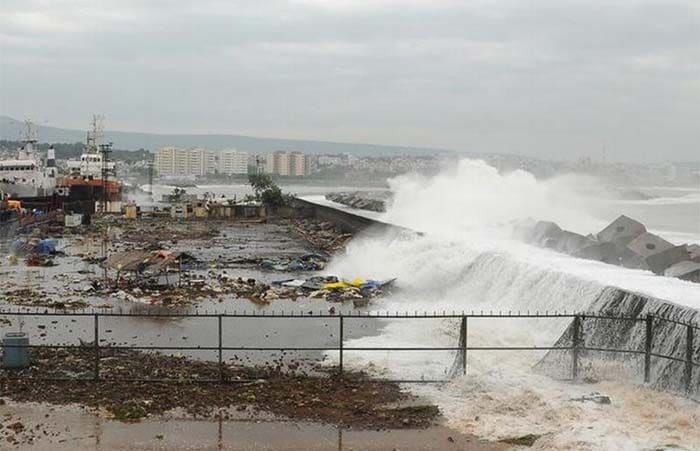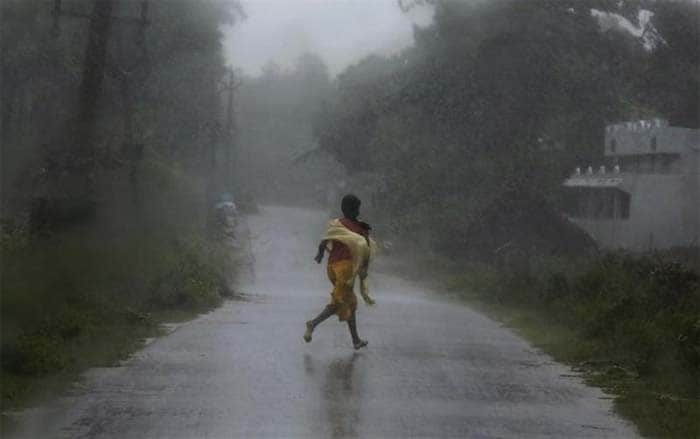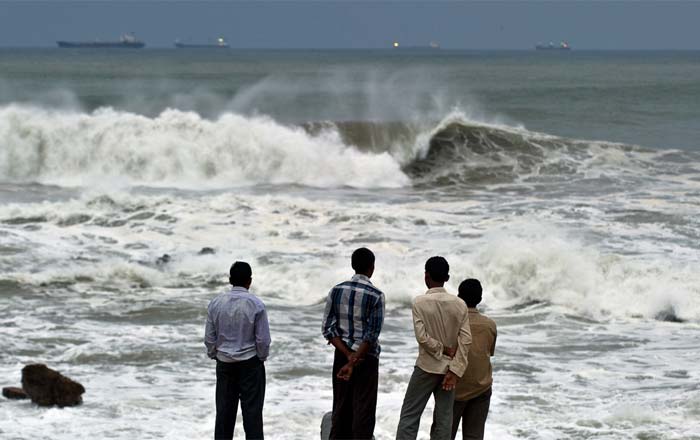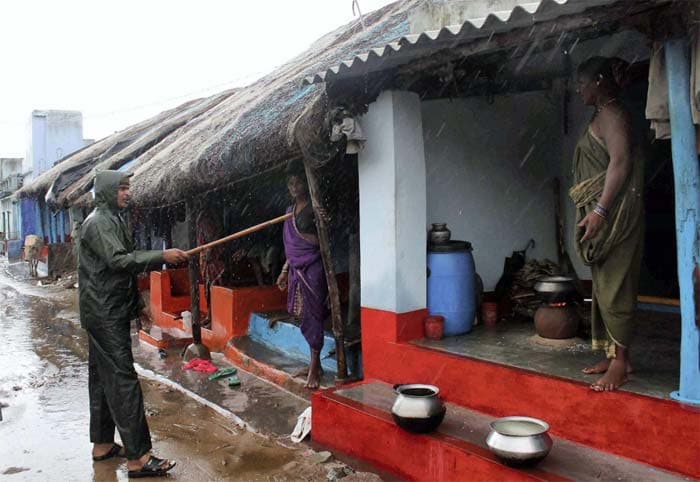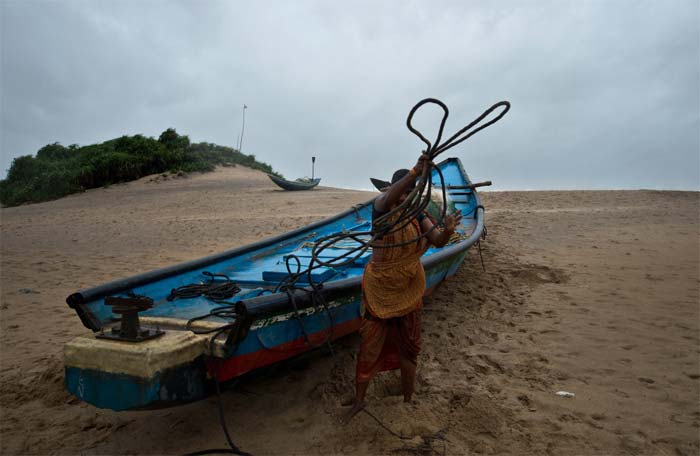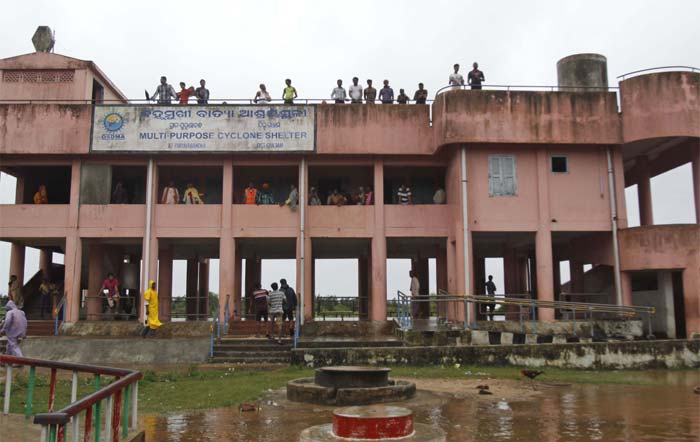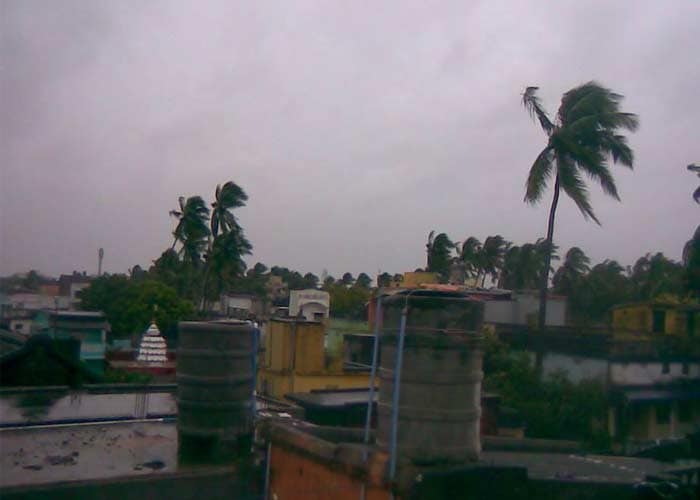As Cyclone Phailin approaches, massive evacuation on
Cyclonic storm Phailin, the strongest to hit India in more than a decade and classified as 'very severe' so far, is closing in towards coastal Odisha and Andhra Pradesh at wind speeds averaging 200-210 km per hour and is expected to hit the two states between 6 pm and 8 pm tonight.
-
Cyclonic storm Phailin, the strongest to hit India in more than a decade and classified as 'very severe' so far, is closing in towards coastal Odisha and Andhra Pradesh at wind speeds averaging 200-210 km per hour and is expected to hit the two states any time now. The storm, likely to affect around 1.2 crore people, has triggered mass exodus in at least seven districts of the two states. Seen here: Men try to get a motorbike through trees knocked down by heavy rain in Berhampur, about 180 kilometres south of Bhubaneswar.
-
Strong winds and heavy rains pounded the eastern coastline on Saturday, as authorities rushed to move tens of thousands of people away from the cyclone. Seen here: Waves crash onto the shore at a fishing harbour in Visakhapatnam district in Andhra Pradesh.
-
In Vishakhapatnam, life is normal so far. Sky is overcast, but there is no rain. However, authorities are on standby and rescue and relief materials are ready. The Odisha government has said it was setting a "zero casualty target" and was seeking "100 percent" evacuation of people in areas likely to be hit by the storm. (Photo courtesy: Maya Sharma)
-
Indian Air Force assets in Nashik, Ranchi, Bangalore, Nagpur and Barrackpore are on standby; more than 20 planes and choppers have been deployed. A 30-member divers' team of the Indian Navy is ready; its ships will be deployed after the cyclone landfall. Five Army columns have been sent to Bhubaneswar from Ranchi.
-
The Indian Meteorological Department or IMD has said Phailin will remain a "very severe" cyclone, but it is not right to call it a super-cyclone yet. Some weathermen are describing it as potentially India's version of hurricane Katrina, one of the deadliest storms in the US history.

